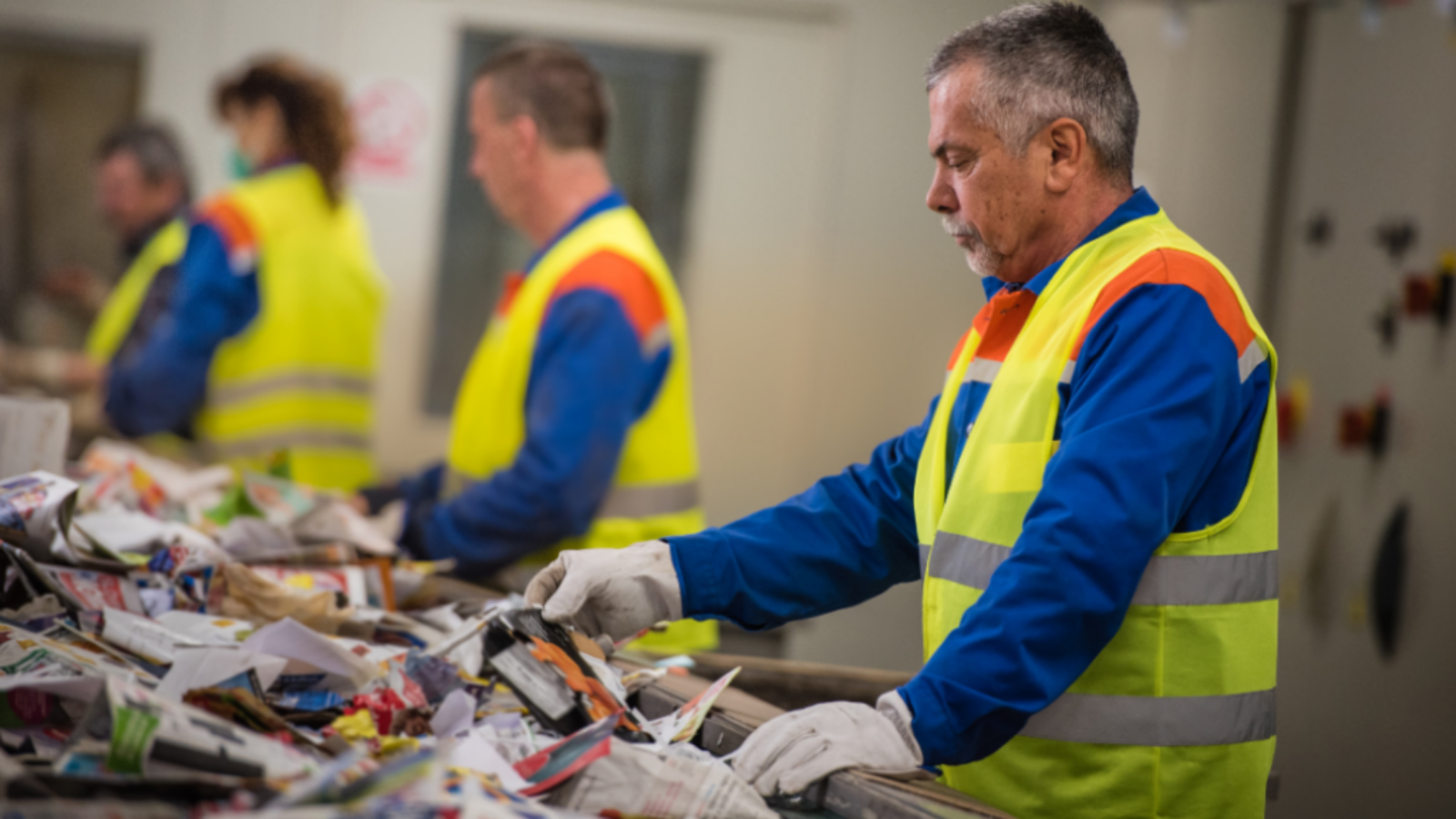There is a general understanding of what EPR is in the world of packaging sustainability. But what exactly is EPR, and how does it help companies reach their sustainability goals? According to the Sustainable Packaging Coalition, Extended Producer Responsibility (EPR) is an approach to policy that takes all the environmental costs associated with packaging throughout the packaging life cycle, and adds them to the market price of that package.
What is Extended Producer Responsibility?
Through EPR, companies are responsible for packaging after its initial use so less waste goes to landfill.
EPR can include both operational responsibility and financial responsibility, though the amount and type may differ. Producers are required to provide funding and/or services that help in managing the involved products after the use phase. EPR can apply to products, packaging, or all of the above, and there are numerous EPR initiatives across the world, each with their own special qualities.
According to the SPC, “Many new bills and positions extend cost coverage to include outreach and education, infrastructure improvements, and end-market development for recycled materials. Therefore, organizations and policymakers are increasingly pointing to effective EPR as a necessary component of a comprehensive approach to addressing recycling challenges and concern over single-use product pollution.”
According to the Organization for Economic Co-operation and Development, assigning responsibility can provide incentives to prevent waste at the source, support the achievement of public recycling and materials management goals, and promote package design for the environment.
Examples of EPR in Action
EPR is already common in many places outside the United States. According to the Natural Resources Council of Maine, packaging laws have proven to be successful across the world. In France, their EPR law has been in place since 1975. It states that “producers, importers, and distributors must be required to contribute to the disposal of waste from their products.” Europe already has extensive EPR programs. In Europe the Directive on Single-use Plastics entered into force in July 2019.
Unfortunately, very few places in the United States have EPR laws for packaging. For instance, there is no national EPR law and the only two states with substantial laws are Oregon and Maine. However, the momentum for EPR is growing in the US and fifteen other states have introduced legislation on EPR for packaging, including California, Illinois, New York, Pennsylvania, and Kentucky. Eight states (California, Connecticut, Delaware, Hawaii, Maine, New York, Oregon and Vermont) have banned single-use plastic bags.
This map shows the states that have introduced legislation on EPR for packaging in gray, and where EPR for packaging bills have passed in green.
Maine and Oregon
Maine was the first US state to hold corporations accountable for the plastic waste and packaging they create. Their Extended Producer Responsibility for Packaging law (LD 1541) increases recycling rates, reduces packaging pollution, and even saves taxpayers money.
In Oregon, their EPR law was passed in August 2021. Under this law, most producers are required to become a member of a PRO, or producer responsibility organization. The PRO must then submit an EPR plan to Oregon’s Department of Environmental Quality by March 2024 and begin implementing the plan by 2025.
The table below shows the similarities and differences between the EPR laws in Oregon and Maine.
National Level Policy
In conclusion, creating and implementing legislation on a national level rather than on a state to state level is important to moving EPR forward. According to the World Wildlife Fund, 68% of Americans believe that the companies which produce plastic should be responsible for collection, sorting, and recycling. EPR shifts the financial burden of waste management away from local governments and puts it on the producers of packaging instead.
According to WWF, “A national EPR system in the US has the potential to not only bring much needed funding and efficiency to recycling, but also incentivize packaging to be designed to be recyclable or reusable and innovate solutions that minimize the environmental impact of their products.” EPR is also a policy mechanism that streamlines recycling operations, and as a result it would also ensure equitable access to recycling for all Americans.
Trayak has been helping leading brands of all sizes make data-driven sustainability decisions for over 10 years. If you would like to learn more about our tools and services please contact us.
Sources
Carvell, Michelle, and Gabriela Dobrot. “Packaging EPR: A Global View and How It Could Affect US Policy.”
“Extended Producer Responsibility.” OECD, https://www.oecd.org/env/tools-evaluation/extendedproducerresponsibility.htm.
“Extended Producer Responsibility – SPC’s Guide.” Extended Producer Responsibility – SPC’s Guide, https://epr.sustainablepackaging.org/.
Ferrario, Matteo. “What Is Extended Producer Responsibility (EPR) ?” Plastics For Change, Plastics For Change, 11 Oct. 2021, https://www.plasticsforchange.org/blog/what-is-epr-extended-producer-responsibility.
Nichols, Sarah, et al. “Explainer: How Extended Producer Responsibility for Packaging Will Benefit Maine.” Natural Resources Council of Maine, 7 Dec. 2021, https://www.nrcm.org/sustainability/how-extended-producer-responsibility-for-packaging-will-benefit-maine/#:~:text=Maine%20is%20the%20first%20state,pollution%2C%20and%20save%20taxpayers%20money.
Rosengren, Megan Quinn and Cole. “Oregon Governor Signs Country’s Second EPR Law for Packaging.” Waste Dive, 30 June 2021, https://www.wastedive.com/news/oregon-epr-packaging-truth-in-labeling-living-wage/602640/.
“What Is Extended Producer Responsibility (EPR)?” WWF, World Wildlife Fund, 8 June 2021, https://www.worldwildlife.org/blogs/sustainability-works/posts/what-is-extended-producer-responsibility-epr.


Add a Comment
You must be logged in to post a comment